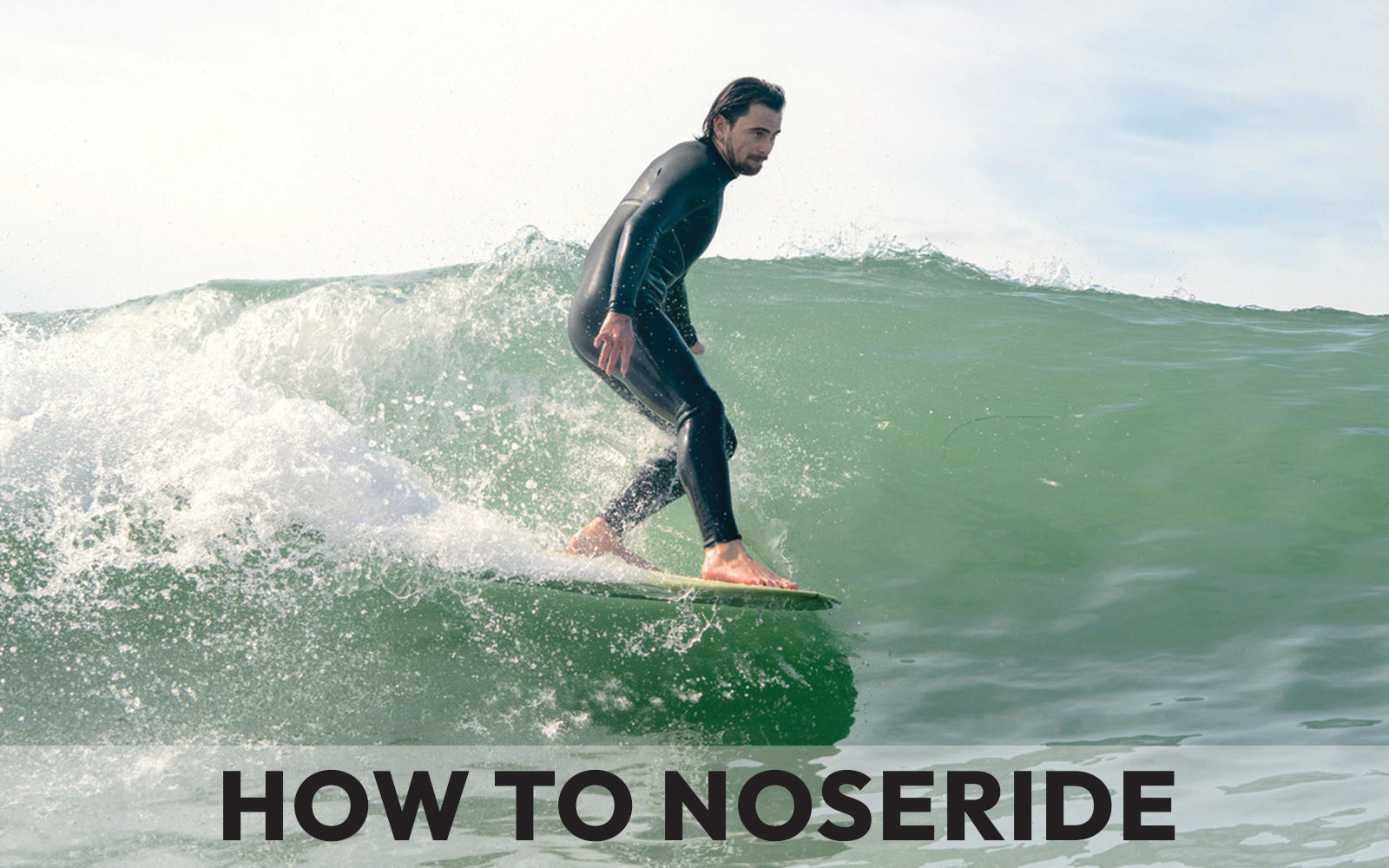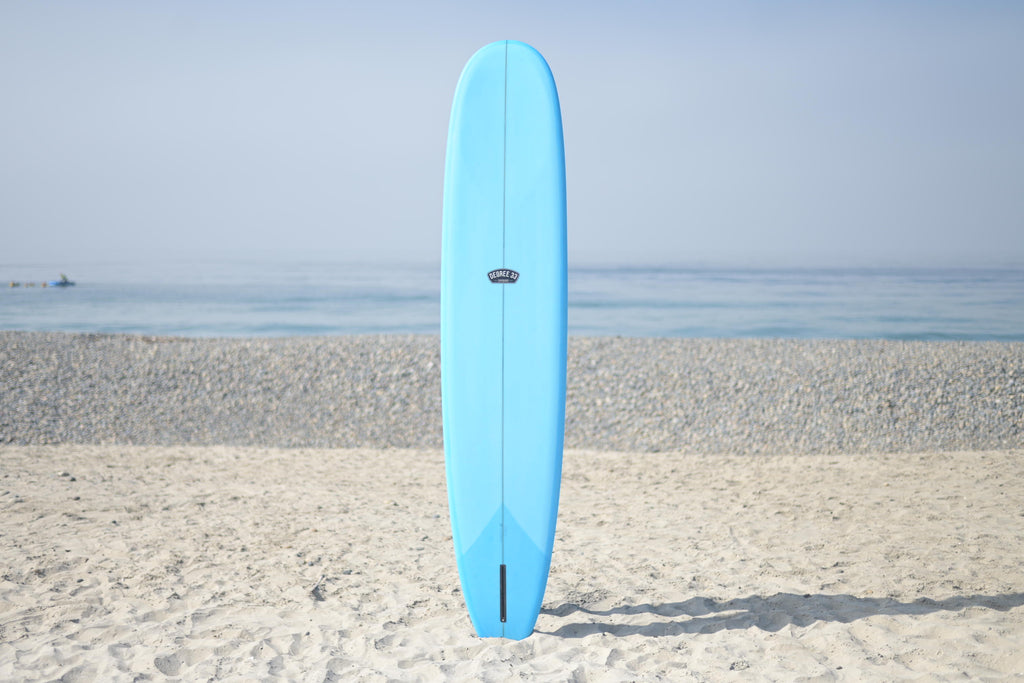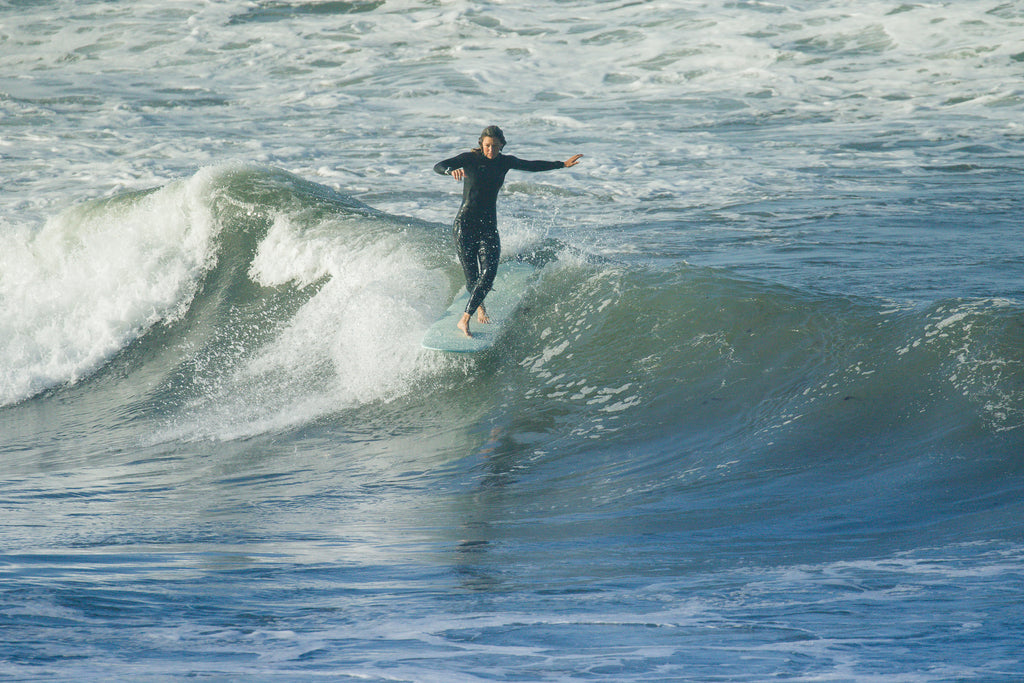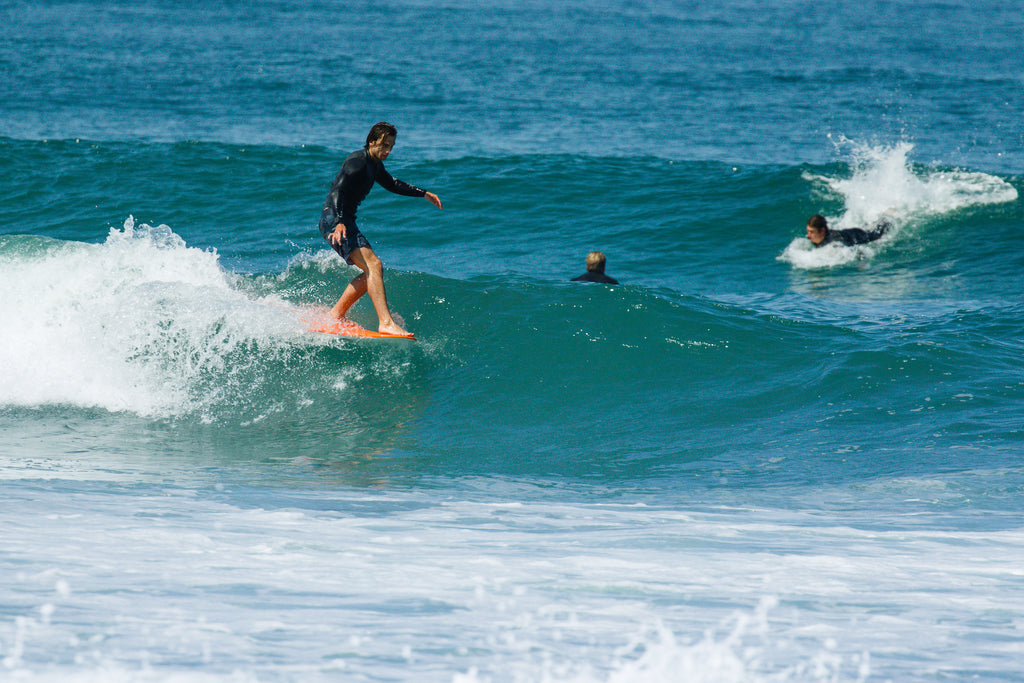How to Noseride a Longboard

The noseride is one of the greatest sensations any surfer can experience. There is nothing like looking forwards and seeing no board in front of you. When done right & with the right board, you will feel the board lift beneath you, propelling you forward as if flying above the water.
The noseride is characterized by a style of grace and ease, but it is certainly not an easy skill! In this blog, we want to help you learn how to perform this timeless surf trick.
What board do I need?
Some boards are impossible to noseride on so you need to be sure you are riding the right board! Our “Classic” longboard is an amazing noserider, along with our Ultimate Longboard.
The optimal board for noseriding is about 3ft taller than your height and at least 23 inches wide (the wider the board, the easier it is to noseride). Some very advanced surfers can noseride on much smaller boards, but this is not ideal for learning. Furthermore, you will want a board that has a wide enough nose so that you don’t pearl when getting to the nose. Some boards, like gliders, may be wide in the center but their narrow nose will damper noserider ability. Look for a board that looks like this:
 The Classic Noserider Longboard
The Classic Noserider Longboard
What kind of fins?
Bigger fins will allow for much more hold on the wave face when you are on the nose. Without the right fin, with all of your weight on the nose of the board, the tail can disengage the wave face and you will slide out. The best noseride fin is a single fin. They will allow you to pivot your bottom turn and put you in the ‘curl’ of the wave for a noseride. For boards in the 9 to 10 ft range, a 9 to 10 inch fin is recommended. For a 2 plus 1 fin set up, an 8 inch fin with side bites will be great for a board between 9-10 feet. 2 plus 1 fin set ups are also amazing when it comes to noseriding, but you will have more of a “carving” bottom turn than a “pivot” bottom turn. The carving motion will propel you forward, so you will need to be skilled in slowing down enough to get in the pocket of the wave for a noseride.
Before you get to the nose: Cross Step!
When newer longboard surfers are attempting a noseride, they usually like to take a shortcut to the nose by shuffling their feet to the front of the board. This may get you to the nose quickly, but it is not considered proper longboard style. For this reason, it is best to learn to “cross step” to get to the nose and to retreat from the nose.
To cross step, move your back foot in front of your front foot when riding the wave. We recommend taking this slow at first. Focus on stepping once forward, then stepping once back in the same motion. With practice you will eventually be able to take more steps all the way to the nose.
An easy way to practice cross stepping is on the sand or at home. Draw a line in the sand and try to perform a cross step, planting your feet in the center of the board each time. If you foot it a little bit off center, you will fall! This is why it is important to practice often so that muscle memory kicks in. Make sure to start small. Start by moving your back foot forward, then move it back. Once you have this down, try to take a full step forward. After this, you will be able to perform 2 or even 3 crossteps forward.
Last, be sure that you are cross stepping back. This can feel more difficult for newer longboard surfers, but remember that if you can cross step forward, you can cross step back in the same motion
 Deanna Dillon Cross Stepping to the Nose on The Ultimate Longboard
Deanna Dillon Cross Stepping to the Nose on The Ultimate Longboard
When to noseride:
One of the most difficult aspects of noseriding is knowing when to do it. First, you will want to make sure the waves are good for a longboard. (smaller, soft waves, but not too small that you can’t get any speed). Then, find the waves that have a nice shoulder, not closing out and not too much of a ‘wedge’ with no open face. As you are taking off, focus on what the wave is doing in front of you. If it is flatter, you will likely not be able to noseride. On the flip side, if the wave is barreling, or overly steep, this will also not be a good time to noseride unless you are an expert. Look for a wave that crumbles down the line and has a good long wall, without closing out. This will allow for a long noseride.
The easiest noseride waves are in the 2-3 foot range at a spot with a distinct sand bar or reef to allow for makeable waves.
How to noseride:
When taking off of the right wave, get to the bottom of the wave, bottom turn, then begin your cross step forward if the wave allows it. Keep walking the board forward until you get to the nose.
Note: the nose will not pearl if the wave has a long wall in front of you. If you find yourself pearling on this step, it is likely because you mistimed the cross step.
As you step for the nose, point your front foot forward and allow your toes to hang over the nose of the board. This is called a “hang five.” If the wave remains steeper in front of you, you will then be able to bring your back foot to the nose as well, which is called a hang 10. Once you see the wave getting flatter in front of you, it is time to quickly cross step back to the center of the board. One of the most common mistakes is staying on the nose for too long… You’ve made it to the nose, you feel the “lift” and never want to leave, then all of the sudden the nose of the board sinks underwater and you fall forward. To avoid this mishap, work on cross stepping back early.
During the noseride, try to keep a relaxed style. The best noserides are the ones that look easy – balance is key.
If you are nervous about cross stepping and noseriding on a hardboard, try it on one of our Hybrid Epoxy Soft Ultimate longboards! This is how shop manager Jake learned how to noseride. The soft deck gave him the confidence to step forward and noseride with ease before transitioning to a hard board.
 Jake Hennessy Hang 5 on the 9’ Ultimate (Hybrid EpoxySoft)
Jake Hennessy Hang 5 on the 9’ Ultimate (Hybrid EpoxySoft)
Most of all, practice, practice, practice! If you follow these steps and apply them in the water, you will find yourself gliding on the nose in no time!
If you are unsure if you have the right board, or would like further assistance in noseriding, give us a call at (800) 920-2363 or email us at surf@degree33.com








Leave a comment